Have you ever wondered about those historic buildings that were not included in the Old Salem tour? On the first Sunday of each month, the Wachovia Historical Society Guild (WHSG) offers an event for lovers of Wachovia history—many of which are held in private residences.
Many Old Salem residents are eager to share their love for the history of their homes by hosting talks and Guild events.
Attendance for Guild Events is limited to small groups, and participation fosters friendships. Each talk or walk is followed by hors d’oeuvres and chatting with your fellow patrons of history. Active membership in WHS (yearly dues up to date) is the only requirement for attendance, and monthly events are listed on the first of each month on the WHS website.
Past 2025 Guild Events
June 1, 2025 Dr. Tom Sears introduces members to the Early Physicians of Wachovia. Dr. Sears profiles the personalities, methods of healing, and challenges of the well trained physicians who helped establish the Moravian settlements in Wachovia as places of healing.
May 4. 2025 Tom Denegres breathtaking photography and well-chosen maps show the ability of Salem to support growth and expansion in trade, manufacturing, and social agriculture, serving the entire region of the Piedmont. Tom’s lecture on Salem Firsts explores an often overlooked history of Salem’s establishments: hotels, merchants, bookstores, toy shops, confectionaries, jewelers, candlemakers, clock makers, chair makers, shoemakers, gunsmths, coopersmiths, tailors, tine plate workers, blacksmiths, tanners, skin dressers, saddler and harness makers, coopers, potters, wheelwrights, portrait painters, bakers, printers, apothecaries, tobacconists, milliners – all supported and developed in Salem by 1835 with a mere population of 700 inhabitants.
April 6, 2025 Martha Hartley, Director of Moravian Research, leads members on a walk tracing the urban creeks and springs that are the visible reminders of the vital ecosystem that was vital to the development of Salem. Her Wachovia Waterways in Salem takes guests to visible remains of the once essential springs, creeks, and rivers that are largely overlooked.
March 2,2025 Hostess Mary Tribble opens up her home in Old Salem to presenter Margaret Supplee Smith for A Celebration of Salem Families who contributed to the living museum that is now Old Salem. Margaret’s presentation concentrates on material from many unpublished resources focusing on the legacies of the Bahnson, Gray, and Hanes families.
February 2, 2025 Presenter Sabrina Garity opens up the Moravian Archives for an exclusive tour emphasizing the maps and work of Moravian Surveyors whose diverse talents and personalities insured the success of the Wachovia Tract settlements.
January 5 2025 Salem Earthware in the Kitchen: Salem artisan Demmie Stuart creates a unique event highlighting the everyday cookware used and sold by the Moravians in Salem’s early years as a commercial town. She also takes guests step by step athrough a Moravian recipee as s they prepare tarts using Moravian molds.
Past 2024 Guild Events
December 3. The Moravian Market on the Square. Christmas shopping at its finestwith Moravian themed articles for everyong.
November raffle: handcrafted Wood Moravian Star
October 27. WHS Annual Event with keynote speaker Dr. Ulrike Wiethaus speaking on her recently released book Moravian Americans and Their Neighbors.
September 1. The Mysterious Guildford Limner. Sally Gant, Director of Education Emeritus at MESDA, discusses her ongoing research on a traveling portrait artist known only as the Guildford Limner.
August 4.Spangenberg’s America. Dr. Craig Atwood, author of over 50 articles and books, sheds a spotlight on August Gottlieb Spangenberg’s American plan, which established the energetic network of successful Moravian colonies
.July 4. WHS members are invited to Moravian Home Church’s re-creation of the United States’ first Fourth of July observance.
June 2. The Salem Band. Donna Rothrock, Salem College Archivist, founder/conductor of the Salem Trombone Choir, and lifelong Moravian Musician, delights WHS with vignettes that tell the story of the oldest band in America.
May 5: Peter Oliver, Visionary. Presenters Tara Logue and Jordyn Jones explore Peter Oliver’s connections to the Wachovia Moravians and offer an opportunity to see this world through the eyes of a freedman.
April 7: Cherokee Girls at Salem. Presenter Anna Smith, a Cherokee Nation Citizen and Scholar, celebrates the Cherokee girls who attended the Salem Girls’ School and their essential role in strengthening the friendship between the Cherokee Nation and Salem Moravians.
March 3: Salem Innovators. Daniel Ackermann, Ph.D., Chief Curator, creates a window to Salem, highlighting American craftsmen from diverse places, backgrounds, and religions. He connects MESDA’s collection to the Salem Tour properties.
February 4: Here to Stay. MESDA opens its doors to Wachovia Historical Society members for an exclusive event, tying together the development of Moravian pottery, furniture, needlework, paintings, and guns—all examples of the industrious Moravians’ ability to fuse inspiration with everyday items. Johanna Brown, Moravian Decorative Arts Curator, connects these ideas with examples displayed in MESDA’s Furr Decorative Arts Museum with a tour.
January 7: A Tale of Two Journeys The incredible journey of the 1766 migration from Bethlehem, PA, to Bethabara, NC, taken on foot and wagon by eighteen Moravian sisters and older girls, is vividly brought to life. Presenters Virginia Hart, Martha Manning, and Katherine Watts tell the story of these intrepid women and their connection to the development of Salem Academy and College.
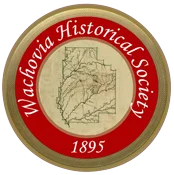






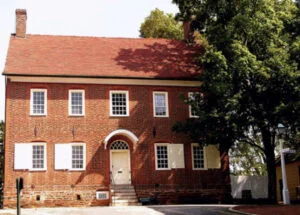 The short story tracks the evolution of a complex physician/patient relationship in which a busy physician takes an instant dislike to a young immigrant couple who brings their infant to the office for a check-up. The readers and the narrator for the performance were medical students and emeritus faculty from Wake Forest University School of Medicine. Society board member Dr. Gene Adcock moderated the program and facilitated the discussion after the performance. The 23 attendees, including the performers, participated in a provocative and insightful conversation after the performance. Dr. Tim Kute shared this response, “I thought that the presentation gave everyone a feeling of how medicine was practiced at that time. One could see the prejudices but also the feelings that taking care of people was very important to the doctors. It was also nice to visit the doctor’s house and examine what he had to work within his practice.” Following the discussion, participants were treated to a tour of The Moravian Way of Health and Healing in the Doctor’s House
The short story tracks the evolution of a complex physician/patient relationship in which a busy physician takes an instant dislike to a young immigrant couple who brings their infant to the office for a check-up. The readers and the narrator for the performance were medical students and emeritus faculty from Wake Forest University School of Medicine. Society board member Dr. Gene Adcock moderated the program and facilitated the discussion after the performance. The 23 attendees, including the performers, participated in a provocative and insightful conversation after the performance. Dr. Tim Kute shared this response, “I thought that the presentation gave everyone a feeling of how medicine was practiced at that time. One could see the prejudices but also the feelings that taking care of people was very important to the doctors. It was also nice to visit the doctor’s house and examine what he had to work within his practice.” Following the discussion, participants were treated to a tour of The Moravian Way of Health and Healing in the Doctor’s House 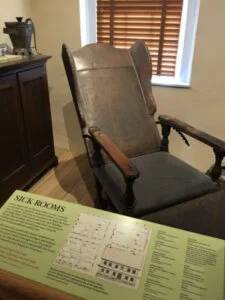 Winston-Salem has a wealth of historical and medical resources that tie together the past and the present. The Medical Readers’ Theater concept encourages anyone to perform and initiate thought-provoking conversations that focus on issues pertinent to the physical, spiritual, and psychological aspects of health and healing 200 years ago and today.
Winston-Salem has a wealth of historical and medical resources that tie together the past and the present. The Medical Readers’ Theater concept encourages anyone to perform and initiate thought-provoking conversations that focus on issues pertinent to the physical, spiritual, and psychological aspects of health and healing 200 years ago and today.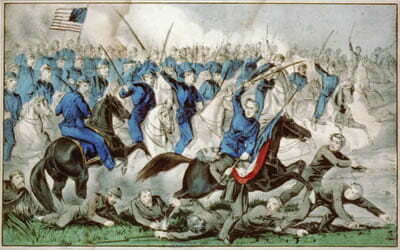
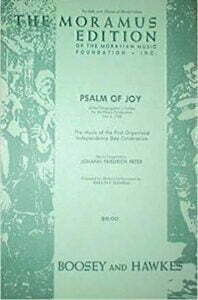 On July 4, 1783, the citizens of Wachovia celebrated our nation’s independence in what was the earliest documented observance of the day. Among the events in Salem was a performance of Freudenpsalm, or Psalm of Joy, compiled by Moravian composer Johann Friedrich Peter.
On July 4, 1783, the citizens of Wachovia celebrated our nation’s independence in what was the earliest documented observance of the day. Among the events in Salem was a performance of Freudenpsalm, or Psalm of Joy, compiled by Moravian composer Johann Friedrich Peter.